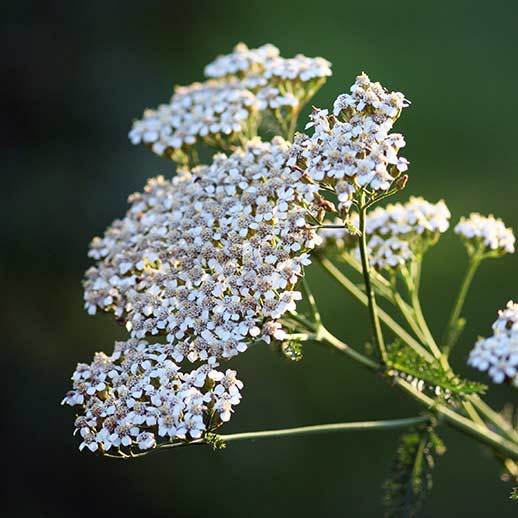
ACHILLEA MILLEFOLIUM
Yarrow
Beauty & Radiance Support
Digestive Support
Immune Support
Liver & Cleanse Support
WHAT IS IT?
Yarrow is a member of the aster family, and is closely related to both chrysanthemums and chamomile. It grows best in a sunny and warm habitat, and
WHAT IS IT USED FOR?
Yarrow helps to support healthy blood flow by normalizing circulation. It has also been shown to support healthy digestion by support healthy secretions of fluids in both
More products with Yarrow
Active Consituents
Sesquiterpene lactones, polyacetylenes, achilleine and flavonoids such as apigenin. The volatile oil contains chamazulene, other azulenes, tannins, coumarins, saponins, sterols, and salicylic acid.
Parts Used
Flowers, some peduncle.
Additional Resources
1.) Final report on the safety assessment of Yarrow (Achillea millefolium) Extract. Int J Toxicol. 2001;20 Suppl 2:79-84.2.) Newall CA, Anderson LA, Philpson JD. Herbal Medicine: A Guide for Healthcare Professionals. London, UK: The Pharmaceutical Press, 1996.3.) Leung AY, Foster S. Encyclopedia of Common Natural Ingredients Used in Food, Drugs and Cosmetics. 2nd ed. New York, NY: John Wiley & Sons, 1996.
Important Precautions
Not for use during pregnancy or lactation, or in those with a sensitivity or allergy to the Asteraceae plant family. If you have a medical condition or take pharmaceutical drugs please consult your doctor prior to use.
Disclaimer
This information in our Herbal Reference Guide is intended only as a general reference for further exploration, and is not a replacement for professional health advice. This content does not provide dosage information, format recommendations, toxicity levels, or possible interactions with prescription drugs. Accordingly, this information should be used only under the direct supervision of a qualified health practitioner such as a naturopathic physician.
Why Gaia Herbs?
Plant-Powered
Harnessing traditional wisdom, delivering Nature's vitality
Potent
Full spectrum formulas for an herb's full array of beneficial compounds
Purity Tested
All products are screened for pesticides, microbes & heavy metals
Transparent
Know what's in your supplement— Meet Your Herbs to learn more
